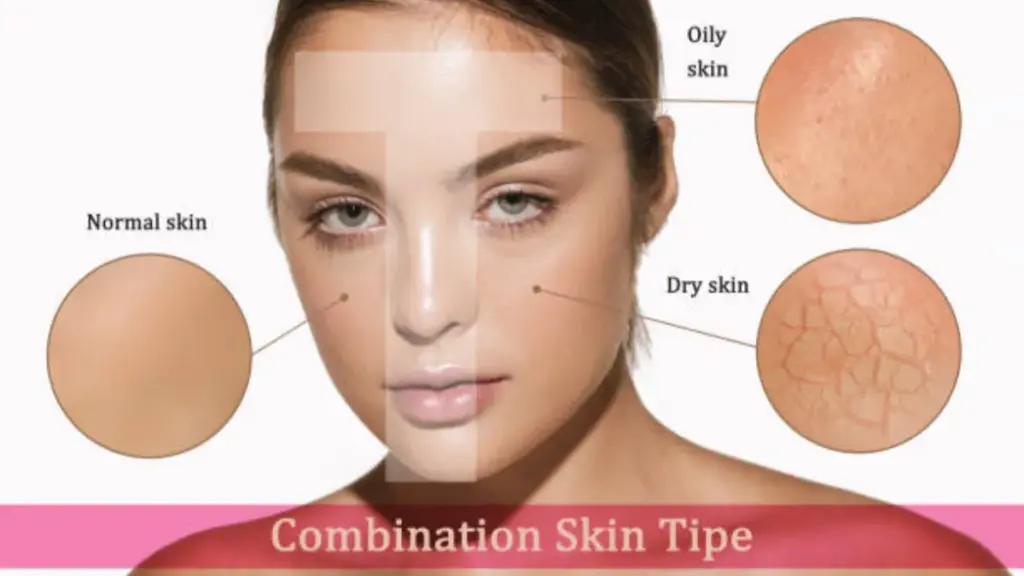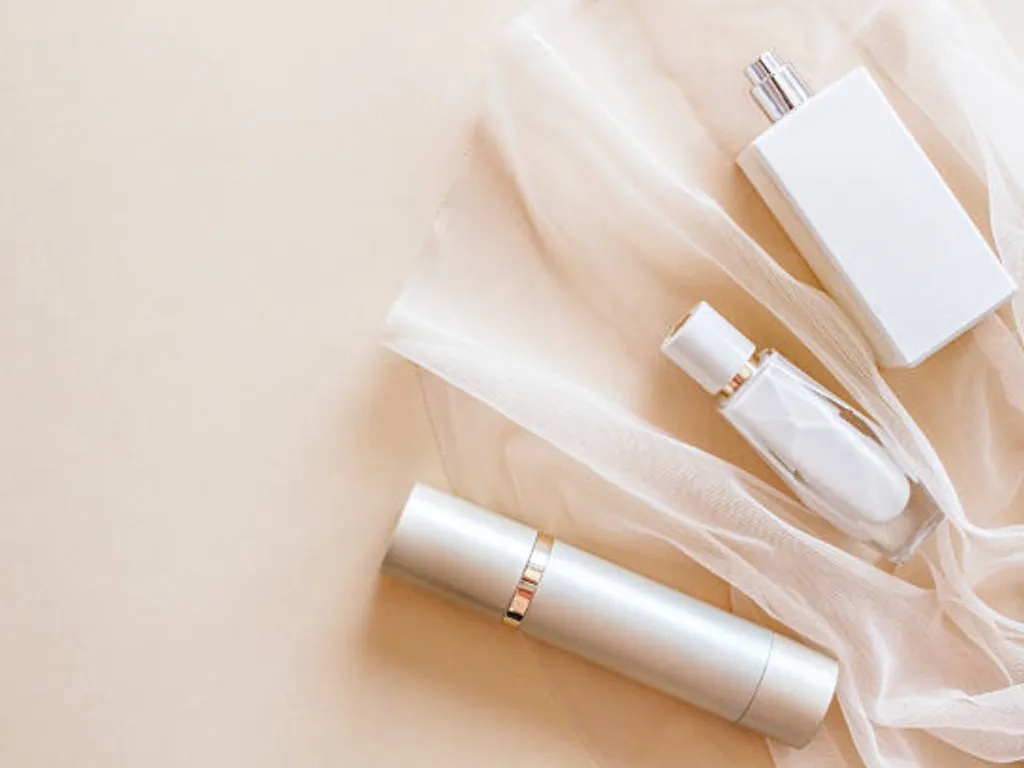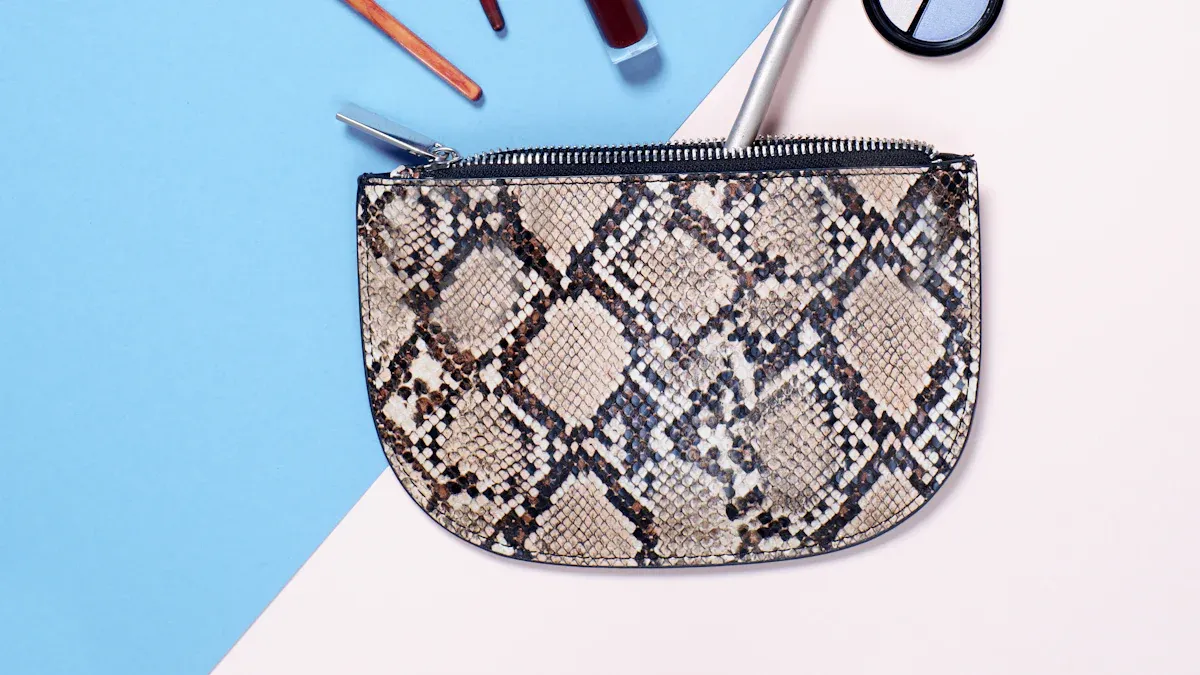
Printing technologies have reshaped beauty product manufacturing, making processes faster, smarter, and more precise. You can now see products come to life with reduced lead times, cutting the launch cycle by 50%. These advancements also lower defects by 54%, ensuring higher-quality results. Beyond efficiency, printing enables the creation of over 800,000 customized cosmetic SKUs on-demand, giving you personalized choices like never before. From innovative product creation to sustainable packaging, printing technologies have unlocked a new era of creativity and convenience in the beauty industry.
Overview of Printing Technologies in Beauty Product Manufacturing
Key Printing Technologies in the Beauty Industry
Printing technologies have become essential tools in the cosmetics industry, driving innovation and meeting consumer demands. You can find several key technologies shaping the beauty landscape today:
Nail Art Printers: These devices allow you to create intricate designs directly on nails, offering personalized beauty solutions. Con 59% of consumers seeking tailored products, nail art printers have gained immense popularity.
3D Printing: This additive manufacturing technique enables the creation of complex shapes and designs for beauty products and packaging. It supports sustainable practices by reducing waste and using eco-friendly materials.
Sustainable Ink Printing: Eco-conscious consumers, who make up 64% of the market, prefer non-toxic and environmentally friendly inks. This technology aligns with the growing demand for green beauty solutions.
Beauty Tech Equipment: During the COVID-19 pandemic, sales of beauty tech equipment rose by 30%, reflecting a shift toward at-home beauty solutions. These devices often incorporate advanced printing technologies for product personalization.
Social media also plays a significant role in driving trends. Acerca de 72% of beauty consumers discover new products and innovations online, influencing the adoption of printing technologies like nail art printers.
Importance of Printing in Beauty Product Creation
Printing technologies have revolutionized beauty product manufacturing by enabling precise and efficient production processes. You can now see how 3D printing transforms the cosmetic industry by creating prototypes and final products with unmatched accuracy. This technology allows brands to experiment with designs and formulations before mass production, reducing errors and costs.
Packaging is another area where printing shines. Advanced printing methods help you achieve visually appealing and functional packaging designs that resonate with consumers. Soluciones de embalaje sostenibles, such as biodegradable materials and refillable containers, are made possible through innovative printing techniques.
Printing also supports personalization. With data-driven solutions, brands can tailor beauty products to individual needs, offering unique formulations and designs. This level of customization enhances customer satisfaction and loyalty, making printing a cornerstone of modern beauty product creation.
Applications of 3D Printing in Beauty Products
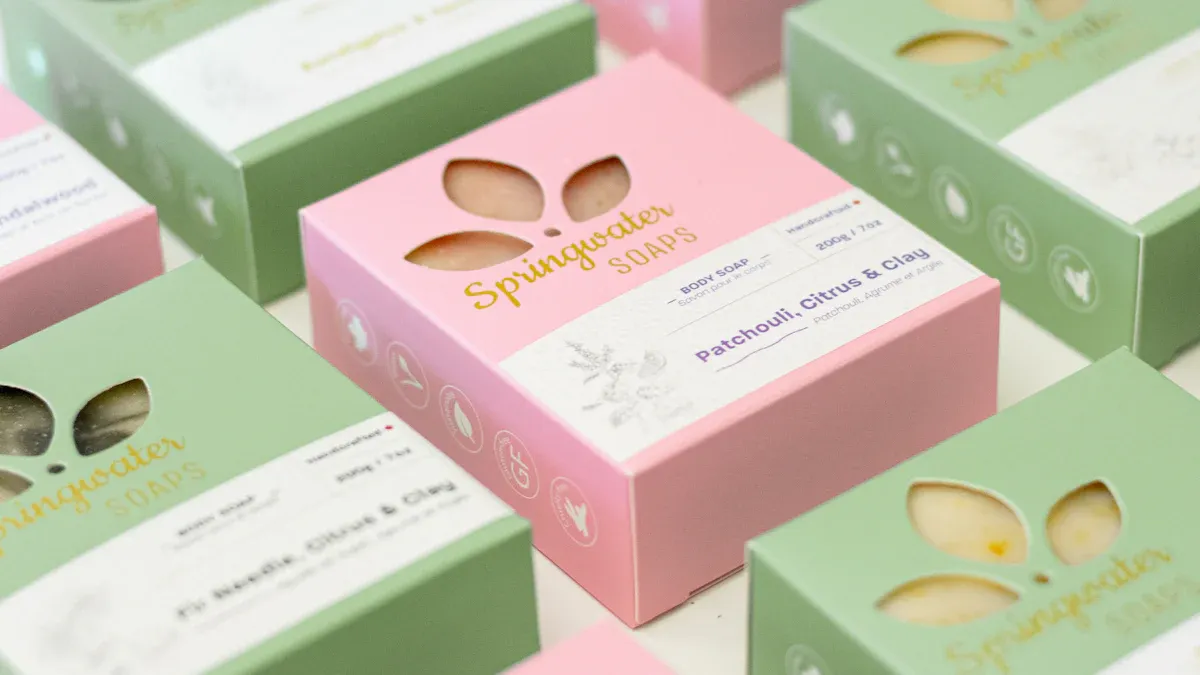
3D Printing for Product Prototyping and Development
3D printing has revolutionized product prototyping in the beauty industry, allowing you to witness faster and more efficient development cycles. This technology enables rapid iteration, where designs can be modified and improved in real time. Por ejemplo, brands like LUSH and Chanel have embraced 3D printing to create molds, herramientas, and even innovative products like the 3D printed mascara brush.
Marca | Application | Year Introduced |
|---|---|---|
LUSH | Invested in 3D printing for R&D, designing molds, tooling, and products. | A few years ago |
Chanel | Launched the first 3D printed mascara brush using SLS technology. | 2017 |
neutrogena | Developed 3D printed facial masks tailored to user needs. | Recent |
BASF | Partnered to create customized 3D printed face masks and eye patches. | 2021 |
L'Oréal | First 3D printed packaging for a product line. | 2019 |
Con impresión 3D, you can achieve cost efficiency by reducing reliance on traditional manufacturing methods. This approach also supports in-house prototyping, cutting down on outsourcing and speeding up development cycles. The ability to create complex geometries further enhances the design possibilities, enabling the production of intricate and visually appealing beauty products.
Rapid prototyping and design iteration enable faster product launches and testing with lower costs.
Prototyping allows teams to test concepts and gather real-time feedback, ensuring better end products.
3D Printed Packaging for Sustainability and Design
3D printed packaging has emerged as a game-changer in the beauty industry, offering sustainable and innovative solutions. This technology minimizes waste by enabling on-demand production, which reduces the need for excessive materials. Por ejemplo, L’Oréal used 3D printing to produce 14,000 packaging prototypes in 2017, significantly cutting development time from months to days.
3D printing reduces packaging waste by allowing for precise production based on demand.
Personalized skincare products created through 3D printing eliminate the need for mass production, Reducción de la sobreproducción y los desechos.
The traditional bulk production model often leads to unsold products; 3D printing ensures you only produce what is needed.
The design capabilities of 3D printed packaging are equally impressive. You can enjoy unique and functional designs that enhance both aesthetics and usability. L’Oréal’s collaboration with Viktor & Rolf, which resulted in limited-edition perfume packaging, highlights the creative potential of this technology.
The ability to create complex designs enhances product aesthetics and marketability.
3impresión D reduces costs and time for producing prototypes compared to traditional methods.
Personalized Skincare Enabled by 3D Printing
Personalized skincare has become a major trend, and 3D printing plays a pivotal role in meeting this demand. This technology allows you to access tailored solutions that address your unique skin concerns. neutrogena, por ejemplo, has developed customized face masks using 3D printing, ensuring a perfect fit and targeted treatment.
Tipo de evidencia | Descripción |
|---|---|
Market Growth | The personalized skincare market is projected to be valued at $48.65 mil millones por 2030, indicating strong consumer interest. |
Preferencia del consumidor | Consumers prefer tailored skincare solutions that address individual skin concerns, enhancing engagement and satisfaction. |
Technology Integration | AI and 3D printing are being used to create customized skincare products, making them more accessible and effective for users. |
Emerging technologies like AI integration with 3D printing make it easier for you to receive personalized recommendations and custom skin regimens. These advancements not only improve product effectiveness but also reduce waste by eliminating the need for generic, one-size-fits-all solutions.
Consumers increasingly seek skincare products tailored to their specific needs.
Many struggle to find effective products, highlighting the demand for personalized solutions.
3D-printed skincare supplements and custom 3D printable nails are examples of how this technology is transforming the beauty landscape.
By leveraging 3D printing, brands can offer you innovative and effective skincare products that align with your individual preferences and requirements.
Benefits of Printing Technologies in Beauty Product Manufacturing
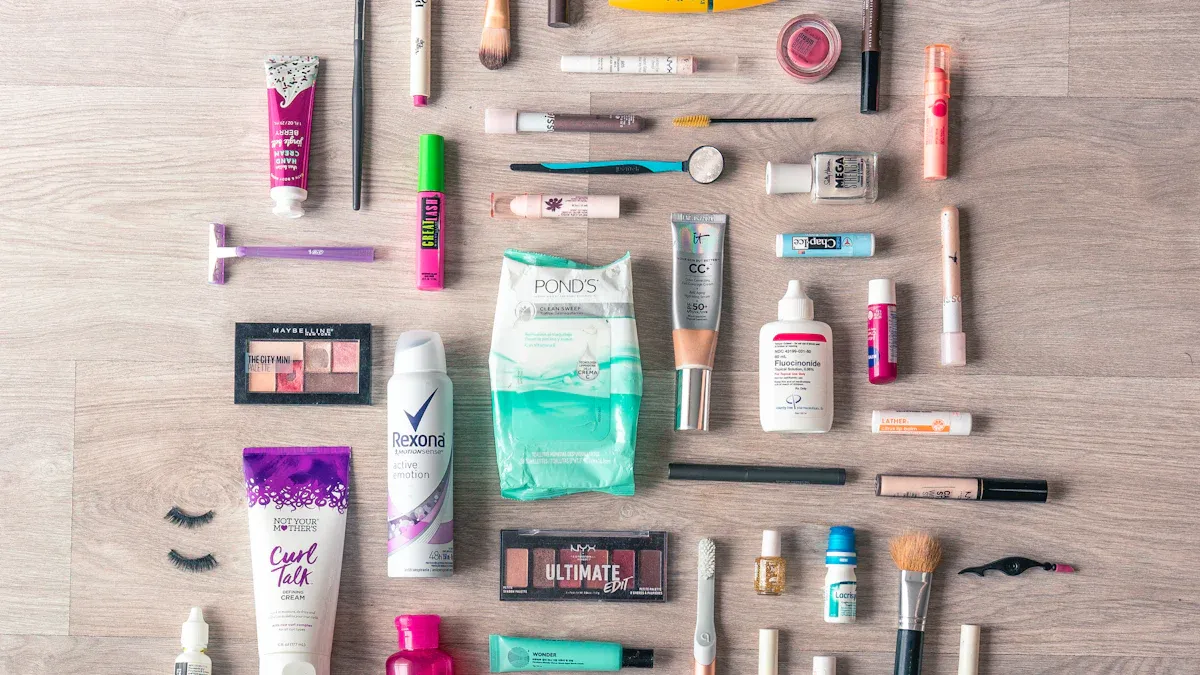
Advancing Sustainability in Beauty Products
Printing technologies have significantly advanced sustainability in beauty product manufacturing. By adopting innovative methods, brands can reduce their environmental impact and meet the growing demand for environmentally friendly solutions.
The shift toward waterless beauty products has reduced the need for plastic packaging. Concentrated formulations and solid products further lower plastic usage.
Many companies now use biodegradable and recyclable materials in their packaging. Low-VOC inks and waterless printing technologies also minimize environmental harm.
Recycled content is increasingly utilized, with post-consumer recycled (PCR) materials supporting a circular economy. This approach reintroduces used materials into production, Reducción de desechos.
These advancements align with the cosmetic industry’s commitment to sustainability. Por ejemplo, 3D printing enables the creation of sustainable packaging by minimizing material waste and energy consumption. This additive manufacturing process builds products layer by layer, ensuring optimal material usage.
Consejo: Choosing beauty products made with sustainable packaging not only benefits the environment but also supports brands that prioritize eco-conscious practices.
Enhancing Customization and Personalization
Printing technologies have revolutionized customization in beauty product manufacturing. You can now enjoy products tailored to your unique preferences, thanks to innovations like 3D printing and digital printing.
Beneficio | Descripción |
|---|---|
Digital printing allows brands to create unique packaging with personalized messages and designs. | |
Flexibility and Quick Turnaround | It enables rapid adjustments to trends and limited edition packaging without high costs. |
Interactive Customer Involvement | Customers can engage in the design process, enhancing satisfaction and emotional investment. |
Personalization at Scale | Companies can produce custom designs for small quantities, making products feel special to customers. |
The market for personalized beauty products continues to grow. Por 2025, it is expected to reach $49.09 mil millones, with a projected revenue of $87.14 mil millones por 2034. This growth reflects the increasing demand for tailored solutions. Acerca de 77% of consumers prefer brands offering personalized services, y 75% are more likely to purchase when recommendations are customized.
3D printing plays a key role in this trend. It allows for the creation of products that match individual shapes and sizes, ensuring a perfect fit. Whether it’s personalized skincare or custom packaging, printing technologies make it possible to deliver unique experiences at scale.
Boosting Efficiency and Reducing Costs
Printing technologies have streamlined production processes in beauty product manufacturing, leading to improved efficiency and cost savings. Automation plays a crucial role in this transformation, enabling faster and more accurate production.
Innovation Type | Cost-Saving Benefit |
|---|---|
Print on Demand (POD) | Reduces waste and lowers inventory costs by producing items only when ordered. |
Global Network | Minimizes shipping costs and delivery times through local printers. |
Automated Processes | Lowers labor costs and minimizes errors through streamlined operations. |
Resource Optimization | Reduces waste by ensuring optimal use of materials. |
Digital Proofs | Avoids costs associated with traditional proofing methods. |
Low Overhead | Eliminates the need for expensive on-site hardware and software investments. |
At Whitman Laboratories, 3D printing has modernized manufacturing processes. New jigs for quality assurance in label alignment save time and reduce costs. By producing parts in-house, companies avoid the expenses and delays associated with outsourcing. Additive manufacturing also minimizes waste by building parts layer by layer, unlike traditional subtractive methods.
Rapid prototyping further enhances efficiency. Brands can quickly test and refine designs, reducing development cycles and speeding up product launches. This approach not only saves time but also lowers costs by eliminating the need for expensive molds.
Nota: Embracing automation and 3D printing can help brands stay competitive by reducing production times and costs while maintaining high-quality standards.
Challenges and Future Trends in Printing Applications
Overcoming Technical and Cost Barriers
Printing technologies, including 3D printing, have transformed beauty product manufacturing. Sin embargo, challenges remain. High initial costs for equipment and materials can deter smaller brands. You may also notice that technical expertise is often required to operate advanced machines, which adds to operational expenses.
Material limitations present another hurdle. While 3D printing offers incredible design flexibility, not all materials are compatible with this technology. Por ejemplo, creating durable yet sustainable packaging requires ongoing research to develop eco-friendly materials that meet industry standards.
To overcome these barriers, companies are investing in research and development. Collaborative efforts between manufacturers and material scientists are driving innovation. Como resultado, you can expect more affordable and versatile solutions in the near future.
AI Integration with 3D Printing for Beauty Products
AI innovations are reshaping how 3D printing is used in the beauty industry. By combining artificial intelligence with 3D printing, brands can create highly personalized products. Por ejemplo, AI analyzes your skin type and preferences to design custom skincare solutions. This data is then used to produce tailored products using 3D printing.
AI also enhances efficiency. Predictive algorithms optimize printing processes, reducing material waste and production time. You benefit from faster delivery of high-quality products. Además, AI-driven quality control ensures that every item meets strict standards, minimizing defects.
The integration of AI with 3D printing is still evolving. As these technologies advance, you can look forward to even more innovative and personalized beauty solutions.
Bioprinting and Other Emerging Innovations
Bioprinting is one of the most exciting advancements in the beauty industry. Unlike traditional 3D printing, bioprinting uses bioinks and living cells to create products. This technology has the potential to revolutionize skincare by producing lab-grown skin substitutes for testing and treatment.
Emerging innovations in bioprinting include instruments like bioprinters and reagents such as bioinks. These tools enable the creation of complex structures, including skin tissues. Products like 3D cell cultures support the development of advanced beauty applications. Software and services enhance the functionality of bioprinting technologies, making them more accessible to brands like yours.
Tipo de segmento | Descripción |
|---|---|
Instruments | Bioprinters used for creating beauty products. |
Reagents | Bioinks that are essential for the bioprinting process. |
3D Cell Culture | Products that support the development of skin substitutes and other beauty applications. |
Software and Services | Tools that enhance the functionality of bioprinting technologies. |
End User Markets | Includes cosmetics, drug discovery, and clinical applications. |
Geographic Regions | Analysis covers North America, Europa, and emerging markets like India and China. |
The future of bioprinting looks promising. A medida que esta tecnología evoluciona, you may see breakthroughs in sustainability and product innovation. Por ejemplo, 3D bioprinting could eliminate the need for animal testing by creating realistic skin models. Emerging markets in India and China are also driving growth, making bioprinting a global phenomenon.
Consejo: Keep an eye on bioprinting advancements. They could redefine how beauty products are developed and tested.
Printing technologies have revolutionized beauty product manufacturing, offering you faster production, reduced waste, and endless possibilities for personalization. These advancements allow brands to create sustainable packaging, tailor products to your needs, and bring innovative designs to life.
Key Takeaway: Printing technologies empower the beauty industry to meet your expectations for eco-friendly, eficiente, and customized solutions.
The future holds even greater potential. With ongoing innovation in 3D printing, AI integration, and bioprinting, you can expect groundbreaking products that redefine beauty standards. The journey of transformation has only just begun!
Preguntas frecuentes
What are the main benefits of 3D printing in beauty product manufacturing?
3D printing offers faster production, reduced waste, and enhanced customization. It allows you to create intricate designs, embalaje sostenible, and personalized products tailored to your needs.
Consejo: Look for brands using 3D printing to enjoy eco-friendly and unique beauty solutions.
How does printing technology support sustainability in the beauty industry?
Printing technologies reduce waste by enabling precise production and using eco-friendly materials. They also support biodegradable packaging and waterless printing methods, helping you choose greener beauty products.
Can printing technologies create personalized beauty products?
Sí! Printing technologies like 3D printing and digital printing allow brands to customize products based on your preferences. From skincare tailored to your skin type to personalized packaging, these innovations make beauty products feel uniquely yours.
What role does AI play in printing applications for beauty products?
AI enhances 3D printing by analyzing your preferences and optimizing production. It ensures faster, more accurate results while reducing material waste. AI also helps create personalized skincare solutions by combining data with advanced printing techniques.
Are there any challenges with using printing technologies in beauty manufacturing?
High costs and material limitations can pose challenges. Sin embargo, ongoing research and innovation aim to make these technologies more affordable and versatile for brands and consumers like you.
Nota: A medida que la tecnología evoluciona, expect more accessible and innovative solutions in the beauty industry.

